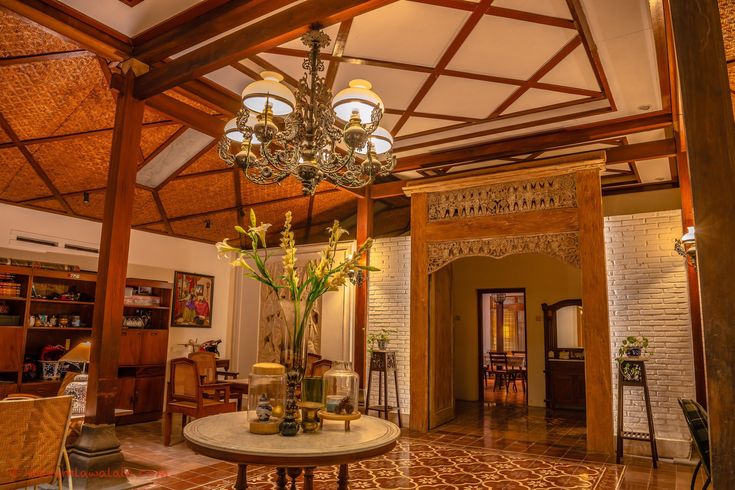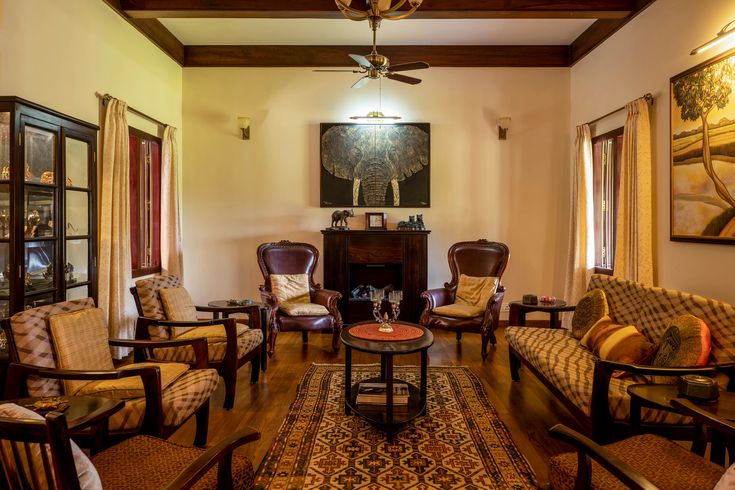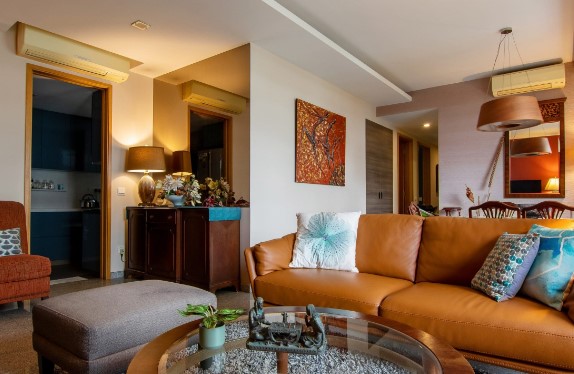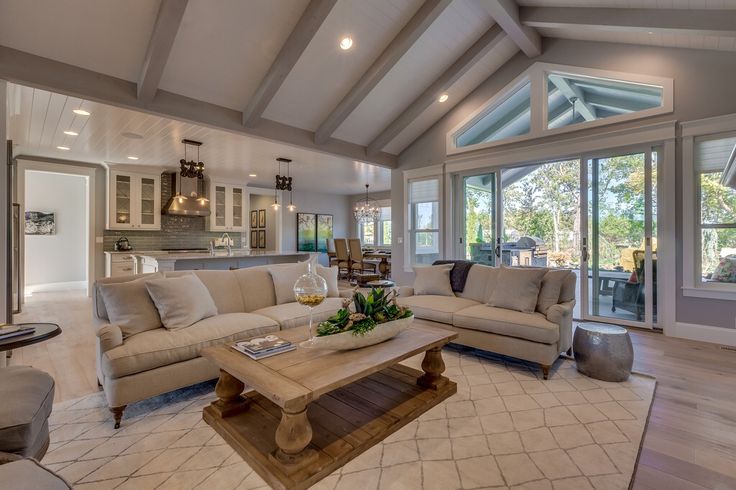The Ultimate Guide to Creating a Vintage-Inspired Home
The Ultimate Guide to Creating a Vintage-Inspired Home – Creating a vintage-inspired home is a charming way to combine nostalgia with elegance, transforming your living space into a haven of timeless beauty. Whether you’re drawn to the rich aesthetics of the 1920s or the retro vibes of the 1970s, achieving a vintage look involves blending design elements, furniture, and accessories that reflect your chosen era. This guide will walk you through every step of creating a vintage-inspired home, from selecting the right pieces to mastering the art of blending old and new.

1. Define Your Era
Vintage design covers a broad spectrum of styles. Before diving into decor, decide on the time period you want to replicate. Here are some popular options:
- 1920s Art Deco: Glamorous and luxurious, with bold geometric patterns, rich colors, and metallic accents.
- 1950s Mid-Century Modern: Characterized by clean lines, organic shapes, and functional designs.
- 1970s Retro: Bohemian and vibrant, featuring earthy tones, bold patterns, and an eclectic mix of materials.
Defining your era will help narrow down furniture, color palettes, and decor choices, ensuring a cohesive aesthetic.
2. Start with the Basics: Walls and Flooring
The backdrop of your home sets the stage for vintage charm.
- Walls: Use wallpaper with classic patterns like damask, floral, or geometric prints. Alternatively, opt for a neutral color palette to emphasize furniture and decor.
- Flooring: Hardwood floors are a timeless choice. You can also consider black-and-white checkerboard tiles for a retro kitchen or a Persian rug for added warmth and authenticity.
3. Source Authentic Furniture
Furniture is the cornerstone of any vintage-inspired home. Look for pieces that align with your chosen era:
- Visit antique stores, flea markets, or estate sales to find unique and authentic furniture.
- Choose materials like mahogany, walnut, or teak, depending on the period.
- Reupholster old chairs and sofas with period-appropriate fabrics if needed.
Mixing antique and reproduction furniture is perfectly acceptable and often necessary to complete your look.
4. Incorporate Vintage Accessories
Accessories breathe life into your vintage home. Key items to include are:
- Lamps: Look for Tiffany-style lamps, mid-century modern floor lamps, or retro lava lamps.
- Mirrors: Ornate mirrors with gilded frames add elegance and depth to your space.
- Art and Prints: Hang period-specific art or botanical prints to enhance the vintage vibe.
- Books: Display old hardcover books on shelves or coffee tables for a sophisticated touch.
Thrift stores and online marketplaces like eBay are excellent places to find affordable vintage accessories.

5. Mix Vintage with Modern Elements
While it’s tempting to go all-in on vintage, mixing old and new elements creates a balanced and livable space. For example:
- Pair a vintage sofa with a modern coffee table.
- Use contemporary lighting fixtures to complement antique furniture.
- Add sleek, modern appliances to a retro kitchen.
This approach prevents your home from feeling like a museum while maintaining its vintage essence.
6. Choose the Right Color Palette
Each vintage era is defined by its distinct color schemes. Use these guidelines to inspire your choices:
- 1920s: Jewel tones like emerald green, sapphire blue, and gold.
- 1950s: Pastels such as mint green, soft pink, and butter yellow.
- 1970s: Earthy tones like mustard yellow, burnt orange, and avocado green.
Balance bold hues with neutral tones to avoid overwhelming the space.
7. Add Texture with Fabrics
Fabric choices play a significant role in vintage interior design. Consider the following:
- Velvet and Silk: Ideal for creating an opulent Art Deco vibe.
- Floral Prints: Perfect for a 1950s or 1960s-inspired look.
- Macramé and Crochet: Staple elements for a 1970s bohemian theme.
Use these fabrics for curtains, cushions, and throws to add layers of texture to your home.
8. Create a Cozy Atmosphere
Vintage homes are all about comfort and warmth. Here’s how to achieve that:
- Lighting: Use soft, warm lighting with vintage-inspired fixtures like chandeliers or Edison bulbs.
- Seating: Add plush armchairs, window seats, or a chaise lounge for a cozy touch.
- Fireplaces: If possible, restore or install a vintage-style fireplace as a focal point.
These elements create an inviting and nostalgic ambiance.

9. Repurpose and Upcycle
Vintage design celebrates sustainability, making repurposing and upcycling ideal practices.
- Turn old crates into shelves or coffee tables.
- Use vintage suitcases as decorative storage.
- Repaint or distress wooden furniture to give it a new lease on life.
DIY projects not only save money but also allow you to customize pieces to fit your style.
10. Focus on the Kitchen and Bathroom
Kitchens and bathrooms often showcase the personality of a vintage home. Here’s how to style these spaces:
- Kitchen: Install retro appliances, such as a SMEG refrigerator, and use open shelving to display vintage dishware.
- Bathroom: Opt for clawfoot tubs, pedestal sinks, and patterned tiles for a classic look.
Small touches, like vintage soap dishes and glass jars, can enhance the overall aesthetic.
11. Curate a Collection
Collections are a hallmark of vintage homes. Ideas include:
- Glassware: Collect Depression-era glass or retro cocktail sets.
- Clocks: Display vintage wall clocks or tabletop timepieces.
- Records and Players: Showcase a collection of vinyl records and a turntable.
Curating and displaying these collections can become a unique focal point in your home.
12. Layer with Greenery
Plants can add life and vibrancy to any space, including vintage homes. Choose:
- Classic Indoor Plants: Such as ferns, ivy, or rubber plants.
- Decorative Pots: Use vintage ceramic or terracotta pots for an authentic touch.
Adding greenery complements the rich textures and colors of vintage decor.
13. Pay Attention to Details
The smallest details often make the biggest difference. Consider:
- Hardware: Replace modern cabinet handles and drawer pulls with vintage or antique options.
- Switch Plates: Install brass or porcelain switch plates to complete the look.
- Textiles: Incorporate lace doilies, tablecloths, and vintage linens.
These details may seem minor, but they contribute significantly to the overall ambiance.
14. Avoid Common Pitfalls
Creating a vintage-inspired home requires balance and attention to detail. Avoid these mistakes:
- Overcrowding: Resist the urge to fill every corner with vintage items.
- Ignoring Functionality: Ensure your vintage decor doesn’t compromise the practicality of your space.
- Lack of Cohesion: Stick to your chosen era to maintain a consistent style throughout your home.
15. Embrace the Journey
Designing a vintage-inspired home is a process that takes time and patience. Enjoy the thrill of hunting for unique finds and experimenting with layouts and styles. Over time, your space will evolve into a personal sanctuary that reflects your taste and personality.
Conclusion
Creating a vintage-inspired home is about more than just decor; it’s about crafting an atmosphere that tells a story. By carefully selecting furniture, accessories, and color palettes, you can transform your home into a timeless retreat. Whether you’re drawn to the glamour of the 1920s or the boldness of the 1970s, this guide provides all the tools you need to bring your vintage vision to life.





